Integration of left-right Pitx2 transcription and Wnt signaling drives asymmetric gut morphogenesis via Daam2
- PMID: 24091014
- PMCID: PMC3965270
- DOI: 10.1016/j.devcel.2013.07.019
Integration of left-right Pitx2 transcription and Wnt signaling drives asymmetric gut morphogenesis via Daam2
Abstract
A critical aspect of gut morphogenesis is initiation of a leftward tilt, and failure to do so leads to gut malrotation and volvulus. The direction of tilt is specified by asymmetric cell behaviors within the dorsal mesentery (DM), which suspends the gut tube, and is downstream of Pitx2, the key transcription factor responsible for the transfer of left-right (L-R) information from early gastrulation to morphogenesis. Although Pitx2 is a master regulator of L-R organ development, its cellular targets that drive asymmetric morphogenesis are not known. Using laser microdissection and targeted gene misexpression in the chicken DM, we show that Pitx2-specific effectors mediate Wnt signaling to activate the formin Daam2, a key Wnt effector and itself a Pitx2 target, linking actin dynamics to cadherin-based junctions to ultimately generate asymmetric cell behaviors. Our work highlights how integration of two conserved cascades may be the ultimate force through which Pitx2 sculpts L-R organs.
Copyright © 2013 Elsevier Inc. All rights reserved.
Figures
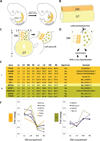
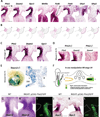
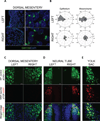
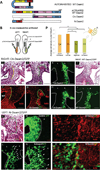
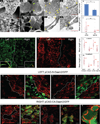
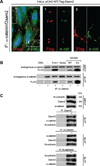
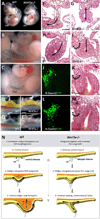

Comment in
-
Your gut is right to turn left.Dev Cell. 2013 Sep 30;26(6):553-4. doi: 10.1016/j.devcel.2013.08.018. Dev Cell. 2013. PMID: 24091006 Free PMC article.
Similar articles
-
Your gut is right to turn left.Dev Cell. 2013 Sep 30;26(6):553-4. doi: 10.1016/j.devcel.2013.08.018. Dev Cell. 2013. PMID: 24091006 Free PMC article.
-
Shroom3 and a Pitx2-N-cadherin pathway function cooperatively to generate asymmetric cell shape changes during gut morphogenesis.Dev Biol. 2011 Sep 1;357(1):227-34. doi: 10.1016/j.ydbio.2011.06.027. Epub 2011 Jun 25. Dev Biol. 2011. PMID: 21726547 Free PMC article.
-
Chromatin Architecture of the Pitx2 Locus Requires CTCF- and Pitx2-Dependent Asymmetry that Mirrors Embryonic Gut Laterality.Cell Rep. 2015 Oct 13;13(2):337-49. doi: 10.1016/j.celrep.2015.08.075. Epub 2015 Sep 24. Cell Rep. 2015. PMID: 26411685 Free PMC article.
-
Left-right asymmetry in gut development: what happens next?Bioessays. 2009 Oct;31(10):1026-37. doi: 10.1002/bies.200900056. Bioessays. 2009. PMID: 19708022 Review.
-
Homeobox transcription factor Pitx2: The rise of an asymmetry gene in cardiogenesis and arrhythmogenesis.Trends Cardiovasc Med. 2014 Jan;24(1):23-31. doi: 10.1016/j.tcm.2013.06.001. Epub 2013 Aug 15. Trends Cardiovasc Med. 2014. PMID: 23953978 Review.
Cited by
-
Loss of WNT4 in the gubernaculum causes unilateral cryptorchidism and fertility defects.Development. 2022 Dec 1;149(23):dev201093. doi: 10.1242/dev.201093. Epub 2022 Nov 30. Development. 2022. PMID: 36448532 Free PMC article.
-
Rare copy number variants contribute pathogenic alleles in patients with intestinal malrotation.Mol Genet Genomic Med. 2019 Mar;7(3):e549. doi: 10.1002/mgg3.549. Epub 2019 Jan 10. Mol Genet Genomic Med. 2019. PMID: 30632303 Free PMC article.
-
Large intestine embryogenesis: Molecular pathways and related disorders (Review).Int J Mol Med. 2020 Jul;46(1):27-57. doi: 10.3892/ijmm.2020.4583. Epub 2020 Apr 21. Int J Mol Med. 2020. PMID: 32319546 Free PMC article. Review.
-
MLL1 is required for maintenance of intestinal stem cells.PLoS Genet. 2021 Dec 3;17(12):e1009250. doi: 10.1371/journal.pgen.1009250. eCollection 2021 Dec. PLoS Genet. 2021. PMID: 34860830 Free PMC article.
-
Unusual association of Axenfeld-Rieger syndrome and wandering spleen: A case report.World J Clin Cases. 2020 Apr 26;8(8):1502-1506. doi: 10.12998/wjcc.v8.i8.1502. World J Clin Cases. 2020. PMID: 32368543 Free PMC article.
References
-
- Aspenstrom P, Richnau N, Johansson AS. The diaphanous-related formin DAAM1 collaborates with the Rho GTPases RhoA and Cdc42, CIP4 and Src in regulating cell morphogenesis and actin dynamics. Exp Cell Res. 2006;312:2180–2194. - PubMed
-
- Baeg GH, Lin X, Khare N, Baumgartner S, Perrimon N. Heparan sulfate proteoglycans are critical for the organization of the extracellular distribution of Wingless. Development. 2001;128:87–94. - PubMed
-
- Barolo S. Transgenic Wnt/TCF pathway reporters: all you need is Lef? Oncogene. 2006;25:7505–7511. - PubMed
-
- Biechele TL, Adams AM, Moon RT. Transcription-based reporters of Wnt/beta-catenin signaling. Cold Spring Harbor protocols. 2009;2009 pdb prot5223. - PubMed
-
- Brent AE, Schweitzer R, Tabin CJ. A somitic compartment of tendon progenitors. Cell. 2003;113:235–248. - PubMed
Publication types
MeSH terms
Substances
Grants and funding
LinkOut - more resources
Full Text Sources
Other Literature Sources
Molecular Biology Databases

